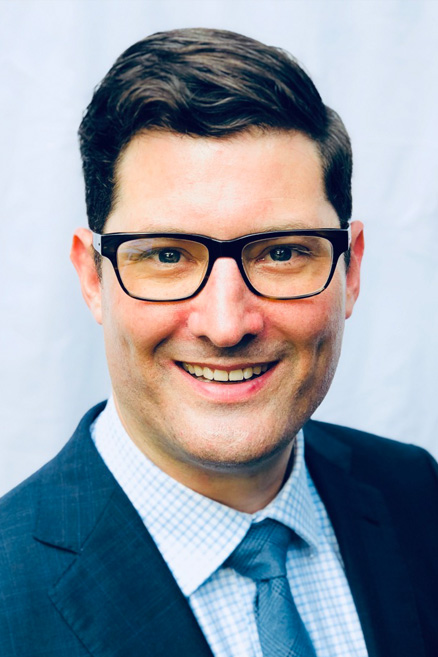Women may feel apprehensive about visiting a urologist due to its personal nature. Learn more from Dr. Szell, urologist in Palm Harbor, FL.
Continue readingKidney Stones: Risk Factors and Preventions
 The prevalence of kidney stones in the United States has increased over the last decade. As many as 1 in 10 Americans have a kidney stone at some point in their lives, and every year more than half a million Americans go to emergency rooms for kidney stone related complications.
The prevalence of kidney stones in the United States has increased over the last decade. As many as 1 in 10 Americans have a kidney stone at some point in their lives, and every year more than half a million Americans go to emergency rooms for kidney stone related complications.
What are kidney stones?
A kidney stone is a small, hard deposit that forms in the kidneys. Stones occur when the urine concentration of crystal-forming substances—such as calcium, oxalate and uric acid—is more than the fluid in the urine can dilute.
They begin as small crystals and grow into larger masses (stones), which then make their way through the urinary tract. Unfortunately, a stone can get stuck on its way out of the urinary system, resulting in an unbearable pain that comes in waves until the stone eventually passes.
What causes kidney stones?
Genetics is one of the risk factors. If you have family members who had kidney stones, you are at a higher risk of having them yourself. Your risk is also higher if you have had kidney stones in the past.
Dehydration is another major cause of kidney stones, which is why more kidney stones occur in the summer. In fact, kidney stone frequency is known to vary by geographic location, with warmer climates having the highest rates of stone formation.
What you eat and drink makes a huge difference. Drinking enough fluids to make over two liters of urine a day reduces the risk of stone formation. Actually, as a rule, you should always check your urine for signs of dehydration. If your urine is dark or yellow, then you are not drinking enough fluid and run the risk of having stones.
Factors that increase dehydration will contribute to kidney stone formation. For instance, excess salt or sodium in food, such as in processed or fast foods, increase dehydration as the excess salt requires a lot of fluid to excrete. So reducing the sodium in your diet will minimize your risk of stone formation.

How do you know that you have kidney stones?
Kidney stones cause pain by getting stuck in the urinary system. Since the kidneys continue to make urine, which in turn can’t get out due to the blockage, the urine builds up, stretches the kidneys and leads to severe pain.
You will know you have kidney stones when you have severe, excruciating pain that comes in waves. The pain typically occurs in the back and does not get better with a change in position. Patients who have had kidney stones and also delivered children report that the stones are more painful than giving birth. In addition to pain, you may have fever, nausea, and even vomiting.
Kidney stones may require a trip to the emergency room if you have severe pain, nausea, vomiting, and a fever greater than 100.3 degrees. These symptoms constitute a urological emergency because they signal both a blockage and an infection. With the blockage preventing antibiotics from getting out via urine, you can get very sick, very quickly; hence the need for emergency care.
Emergency treatment with IV fluids at a hospital may be necessary if you are having nausea and vomiting to the point of dehydration. Emergency care is also appropriate when you have pain that cannot be alleviated by over-the-counter pain medicine.
What is the treatment for kidney stones?
The treatment for kidney stones depends on the size and location of the stone, and on the clinical stability of the patient. The most common approach is medical expulsion therapy—a conservative approach for healthy patients with stones that are small enough to pass on their own and with no fever or other signs of infection.
With medical expulsion, you are encouraged to drink a lot of fluid to help the stone pass on its own. You are also given medications to control the pain and to accelerate passage. If the stone is 5 millimeters or smaller (about half of your thumbnail), there is a 50% chance it will pass on its own and you will avoid surgery.
If you have severe pain, fever, chills and an inability to drink fluids, you may not qualify for medical expulsion therapy. In that case, a surgical procedure may be needed. There are two common surgical options: (1) ureteroscopy or laser lithotripsy, and (2) extracorporeal shockwave lithotripsy.
Ureteroscopy and laser lithotripsy are fancy ways of saying you go to sleep, a camera is inserted through your urethra to the stone, and a laser is used to break the stone into smaller fragments for removal. Extracorporeal shockwave lithotripsy means you go to sleep and sound waves are sent through your skin to fracture the stone into small pieces that can pass on their own in urine.
The advantage of shockwave lithotripsy is that nothing goes into your body, making it less invasive. However, the disadvantage is that the stone fragments still have to pass on their own, a process which can be painful and uncomfortable.
How do you prevent kidney stones?
1. Increase calcium intake
There is a misconception that increasing dietary calcium increases the risk of calcium oxalate stones. This is not true. In fact, eating more calcium rich foods, such as milk or cheese, ensures the oxalate in the diet binds to calcium. When oxalate binds to calcium in the intestines, it is not absorbed in the bloodstream and ends up in stool.
2. Reduce oxalate rich foods
Foods high in oxalate, such as beets, chocolate, tea, coffee, spinach, kale, rhubarb, nuts and beer contribute to stone formation. You may have to eat smaller portions of these foods alongside calcium-rich foods or avoid them altogether.
3. Stay hydrated
Drinking plenty of water will ensure that substances in your urine are diluted and cannot form crystals. As a rule, strive to drink enough water to pass two liters of urine every day—which is drinking roughly eight standard 8-ounce cups per day. It also helps to include some citrus beverages, such as orange juice and lemonade, as the citrate in these beverages helps to block stone formation.
4. Reduce sodium intake
A high salt or sodium diet increases the amount of calcium in your urine and triggers stone formation. Excess salt also wastes the fluid you take as a lot more fluid is necessary for salt-water balance. Make sure to limit your daily sodium intake to 2300mg or less to reduce your risk of kidney stones.
5. Minimize intake of animal protein
Animal protein, such as red meat, eggs, poultry, or seafood, increases the level of uric acid in the body and may cause kidney stones. A high protein diet will also reduce your urinary citrate—the chemical in urine that prevents stones from forming. You can limit animal proteins or replace them with plant-based proteins.
At Advanced Urology Institute, we offer a range of treatments for kidney stones depending on the severity of symptoms and the type, size and location of the stones. We also run tests to find out why they form and give you advice on how to prevent them.
If you or a relative has had kidney stones, consider meeting with one of our urologists for specific ways to reduce your risk. For more information on kidney stone causes, risk factors, diagnosis, treatment and prevention, visit the Advanced Urology Institute website.
Listen to the Podcast to learn more about Kidney Stones, Click here
Robotic Surgery Effective in Partial Nephrectomy
Robotic partial nephrectomy involves using an advanced surgical robot to remove part of the kidney, usually the portion with a tumor. Initially, robotic surgery enjoyed tremendous success with surgical removal of the prostate (prostatectomy), but in recent years its usage in kidney operations also has yielded remarkable results. In fact, robotic partial nephrectomy has become the preferred treatment option for most patients with benign kidney tumors, small renal masses and early-stage cancer. During the procedure, tumors are removed with the least possible disruption of the rest of the kidney — a nephron-sparing approach that maximizes post-operative kidney function.
Why is the da Vinci surgical system suited for partial nephrectomy?
The da Vinci surgical robot provides superior maneuverability that is suited for the delicate slicing, cutting and stitching involved in the removal of a portion of the kidney. The surgical robot offers a three-dimensional view of the targeted area, allowing for a broader range of motion of the surgical devices. Urologists using the robot find it much easier to make the complex maneuvers required during the procedure.
Since it uses smaller incisions and doesn’t involve making cuts through bone or muscle, the da Vinci partial nephrectomy causes less scarring and minimal trauma to patients. The recovery time is typically only 2 weeks compared to the 6-8 weeks recovery time after open kidney surgery. Likewise, blood supply to the kidney is blocked for a shorter duration, leading to less overall blood loss and quicker recovery compared to laparoscopy.
How is the robotic partial nephrectomy performed?
During robotic partial nephrectomy, the surgeon makes a series of tiny incisions in your abdomen. The camera and robotic surgical instruments are inserted through these incisions. To create enough room for manipulation of the surgical instruments and enable easy access to the cancerous tissue, the abdomen is inflated with gas (carbon dioxide gas). The doctor then moves the colon away from the kidney and trims off the fat covering the kidney to expose the kidney surface.
With the kidney exposed, the surgeon halts the blood flow to the kidney temporarily to prevent potential bleeding as the tumor is cut and the remaining portion of the kidney sutured together. At the end of the procedure, the urologist reconstructs the kidney, restores blood flow and then inspects the kidney carefully to make sure there is no bleeding.
Who should undergo robotic partial nephrectomy?
The da Vinci partial nephrectomy is the surgical treatment of choice for patients with smaller kidney tumors, usually not bigger than 4 cm in size. However, even patients with tumors ranging from 4 cm-7 cm also may undergo the procedure if they are to be treated in certain areas. Similarly, robotic partial nephrectomy is appropriate in cases where removing the whole kidney could trigger kidney failure or the need for dialysis.
At Advanced Urology Institute, we perform hundreds of robotic partial nephrectomy every year with amazing results for our patients. The procedure takes a short time, reduces the problems caused by benign or small kidney tumors and is effective in helping patients recover from kidney cancer. The minimally-invasive nature of the procedure guarantees less scarring, minimal trauma and quicker recovery for our patients. But we always ensure that patients are closely monitored for post-operative pain and complications, accomplishing cancer-free and happier lives for our patients. For more information on treatment of kidney cancer and other urological problems, visit our “Advanced Urology Institute” site.
What Does Dr. Nicole Szell Say About Women’s Urinary Incontinence?
Webb McCanse Becoming a Urologist
Becoming a Urologist
The opportunity to work in the Navy was very attractive to me. So I pursued medicine as a path to serving my country. With the United States
Navy taking care of my fees, I completed my medical school training at the University of Kansas and joined the University of Nebraska’s Medical Center for a six-year urology residency. Upon completion, I served in the United States Naval Hospitals of Pensacola and Guam, with sporadic assignments in Cuba and Okinawa, Japan. Following a satisfying naval service, I moved to Advanced Urology Institute.
Areas of Expertise
My extensive training exposed me to a number of advanced technologies and medical procedures. I am an expert in minimally invasive surgical procedures, particularly laparoscopic surgery and robot-assisted surgery for a wide range of genitourinary disorders. At AUI, I see patients with urologic cancers (bladder, penile, urethral and prostate), kidney stones, benign prostatic hyperplasia (BPH), overactive bladder and urinary incontinence, among other conditions. I no longer serve in the Navy, but I am still proud to serve my country by helping its citizens overcome some of the most painful and embarrassing conditions.
Job Satisfaction
Urology is a very interesting profession, with each day presenting new challenges. We educate patients on living healthy lives, achieving their goals and making informed decisions. The level of engagement with patients is just amazing. We get to know our patients, gain their trust and build enduring relationships with them. It is greatly satisfying to just be there for a person who is suffering but feeling embarrassed to discuss his condition. Then to be able to help him open up, discuss the symptoms freely and find relief just brings incredible joy. As a urologist, I am proud of my specialized role and am deeply contented, satisfied and fulfilled as a person.
Why Advanced Urology Institute
Advanced Urology Institute is a pool of like-minded and experienced professionals working through a collaborative, multidisciplinary, patient-centered approach to deliver the best possible care to patients. Our job is not merely to diagnose and treat, but also to help people be proactive and take control of their lives. We consider the different patient needs, offer tailored consultations and treatments, and are always there for our patients. I love working at AUI because it offers the best opportunity for me to serve my country through timely, safe and effective urological care to its citizens. For more information on urological services offered at AUI, visit the “Advanced Urology Institute” site.




